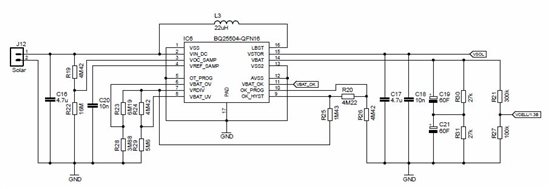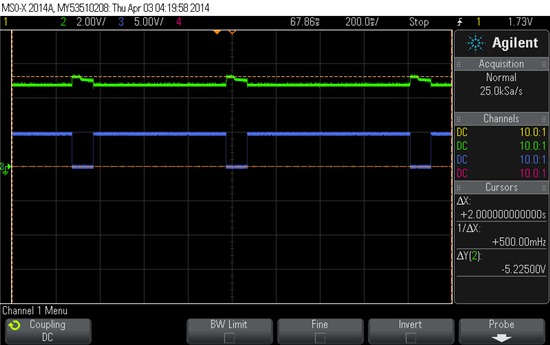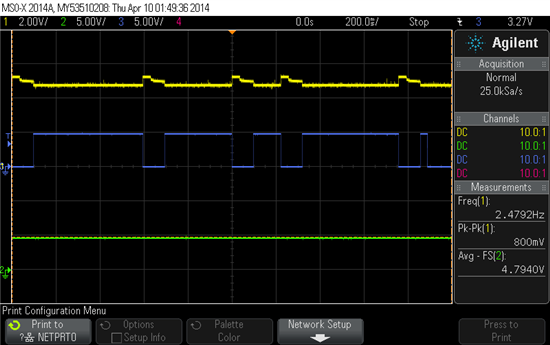Hello TI Community,
I'd like to ask for help. I have an issue with BQ25504 circuit with supercaps. When VIN_DC reach the programed Vbat_OV level then Vbat_OK signal drops down for a short time and then goes back. That causes load power failure because I am using Vbat_OK signal to controlling DC/DC converter by enable pin.
I am attaching the scope figure (blue – Vbat_OK signal; green Vstor) and the schematic.
Thank you for your help
Michal






